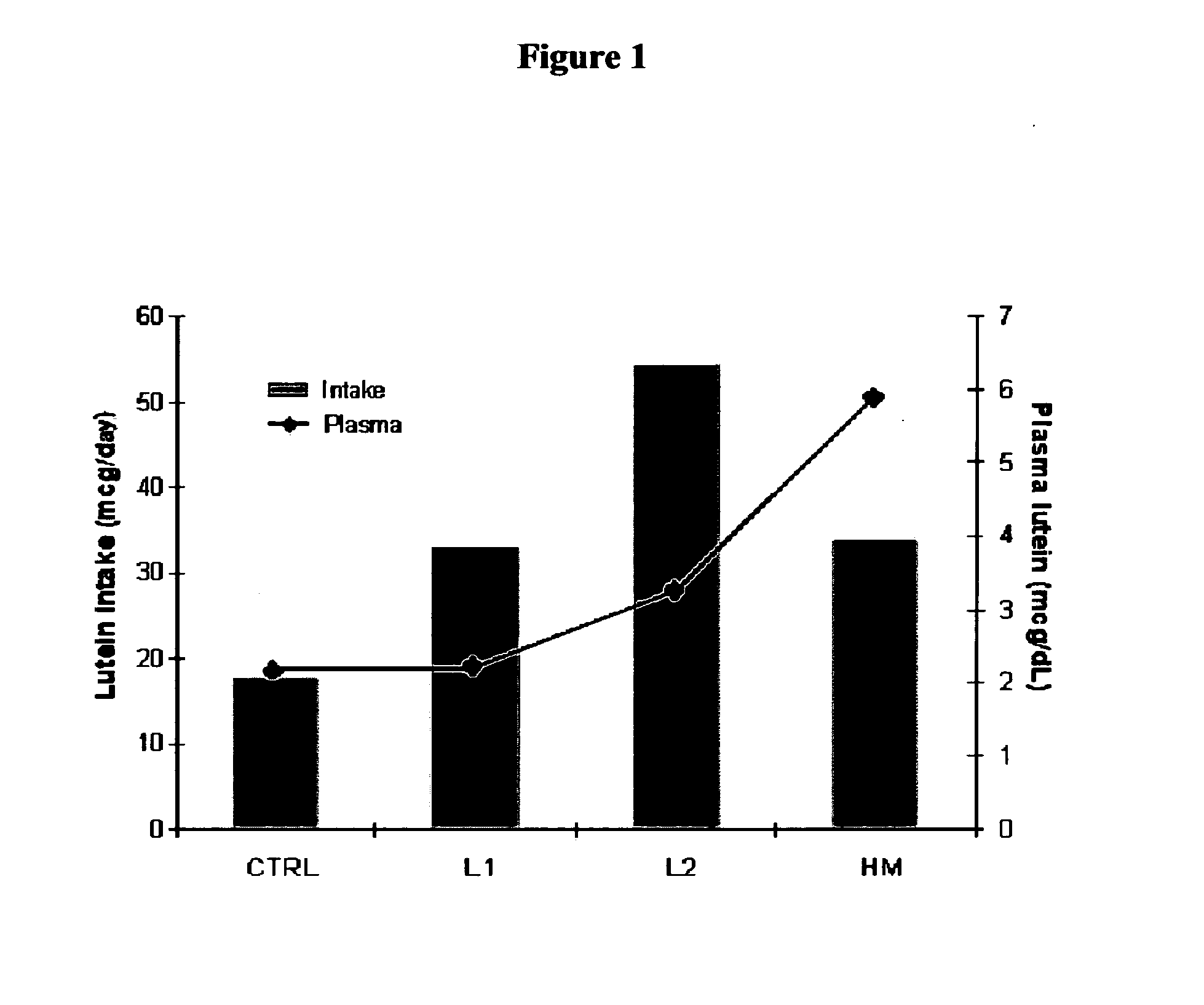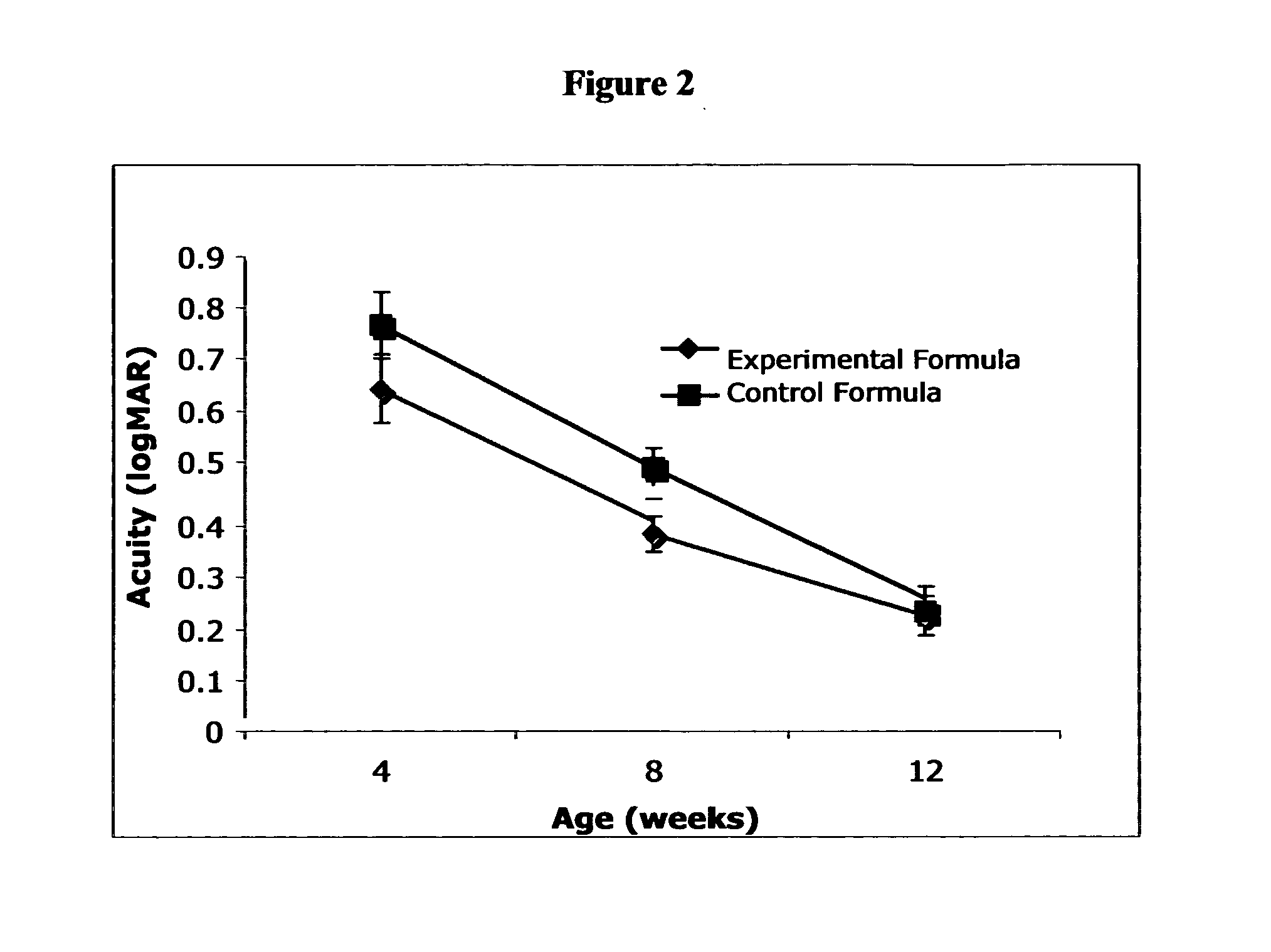Method of reducing the risk of retinopathy of prematurity in preterm infants
a technology of prematurity and infants, applied in the field of infant formulas, can solve the problems of not providing the same high level of nutrition, and achieve the effect of promoting retinal health and vision development in infants and reducing the risk or severity of retinopathy
- Summary
- Abstract
- Description
- Claims
- Application Information
AI Technical Summary
Benefits of technology
Problems solved by technology
Method used
Image
Examples
examples
[0076] The following examples represent specific formulas for use in the methods defined herein, each of which is given solely for the purpose of illustration and is not to be construed as limitations of the present invention, as many variations thereof are possible without departing from the spirit and scope of the invention. All exemplified amounts are weight percentages based upon the total weight of the composition, unless otherwise specified.
Examples 1.1-1.3
[0077] The following are examples of milk based, ready-to-feed, infant formulas suitable for use in the skin carotenoid methods.
Example 1.1Example 1.2Example 1.3Amount perQuantity perQuantity perIngredient454 kg454 kg454 kgWaterQSQSQSLactose27kg27kg27kgARA-containing oil0.167kg0.167kg0.167kg(40% ARA)DHA-containing oil0.063kg0.095kg0.145kg(40% DHA)Non-fat dry milk11.33kg11.33kg11.33kgHigh oleic safflower oil6.5kg6.5kg6.5kgMono- and di-glycerides0.162kg0.162kg0.162kgSoybean oil5kg5kg5kgWhey protein2.8kg2.8kg2.8kgCalcium ca...
example 5.4
[0112] Skin carotenoid levels are measured in a preterm infant born at 26 weeks gestation, weighing 1.7 kg, age 1 day. Skin carotenoid levels are measured (800 Raman Counts) using non invasive Raman Spectroscopy on the infant's palm. The infant is administered the preterm infant formula of Example 5.2 as a primary form of daily nutrition until discharge. The formula contains lutein, lycopene, beta carotene, and zeaxanthin. Skin carotenoids are measured periodically until discharge to assure adequate carotenoid supplementation as noted by increasing skin carotenoid levels (increased Raman Counts). The infant subsequently experiences minimal or no signs of retinopathy of prematurity.
[0113] The exemplified ready-to-feed formulas (caloric density of 812 kcal / liter) are administered to preterm infants to provide from 7-300 mcg / kg of lutein per day. The administered formula improves eye health as described herein, and are especially useful as applied to preterm infants to reduce the risk...
PUM
| Property | Measurement | Unit |
|---|---|---|
| birth weight | aaaaa | aaaaa |
| birth weight | aaaaa | aaaaa |
| concentrations | aaaaa | aaaaa |
Abstract
Description
Claims
Application Information
 Login to View More
Login to View More - R&D
- Intellectual Property
- Life Sciences
- Materials
- Tech Scout
- Unparalleled Data Quality
- Higher Quality Content
- 60% Fewer Hallucinations
Browse by: Latest US Patents, China's latest patents, Technical Efficacy Thesaurus, Application Domain, Technology Topic, Popular Technical Reports.
© 2025 PatSnap. All rights reserved.Legal|Privacy policy|Modern Slavery Act Transparency Statement|Sitemap|About US| Contact US: help@patsnap.com



